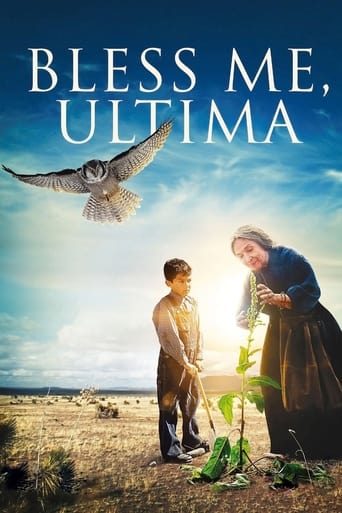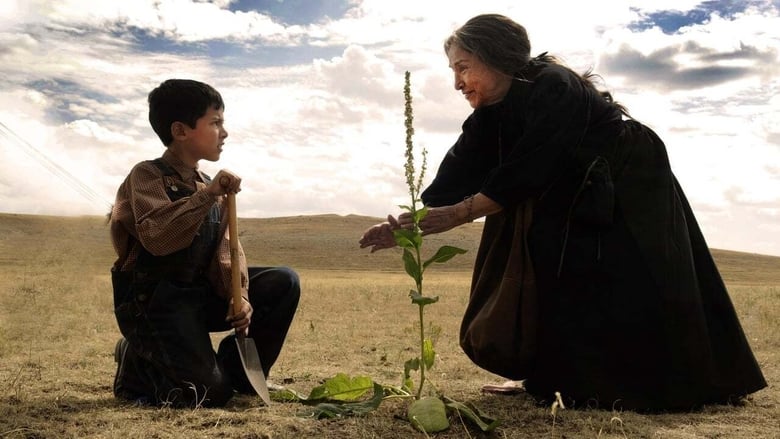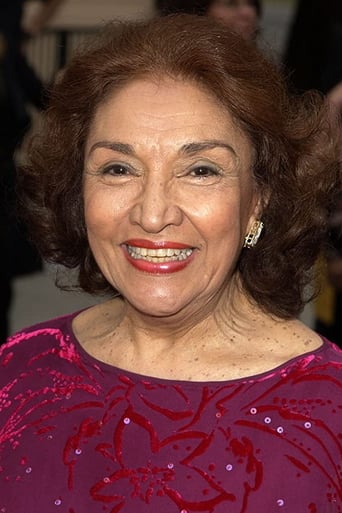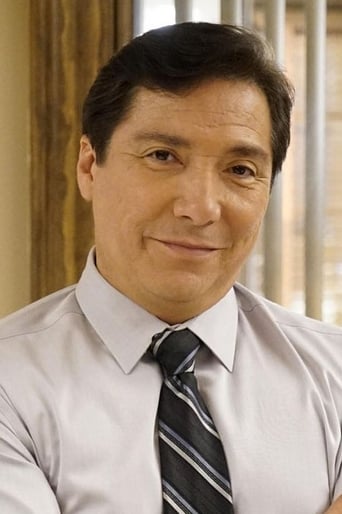Bless Me, Ultima (2013)
In a village in New Mexico, the life of young farm boy Antonio is dramatically changed when an old medicine woman joins his household. This affecting coming-of-age tale recounts Antonio's experiences to reveal the spiritual conflict in his community.
Watch Trailer
Cast


Reviews
Throughout this film Franklin used many techniques to his advantage like sound and lighting. He used indigenous and tranquil music that really went with many of the major themes in this movie. Like most movies Franklin had the music increase in volume and tempo as the scene became more intense and serious. He did this at a more considerable way because he had the music fading in and out of specific scenes which really makes the movie easier to watch and keep up with what's going on. The music also goes well with the magical scenery of the llano and the lighting was perfect throughout the film weather it was showing a characters emotion or just showing the audience the wide open plains of the llano. Franklin does an excellent job using lighting for every scene because the lighting changes with the mood of what is happening in the story which he is trying to hint at using foreshadow to let the audience kind of figure out what will happen next. When things become grim at certain points of the film usually involving death Franklin purposely makes the lighting change from a lighter background to a darker drearier one. Franklin did an excellent job with this whole movie (technique wise) but personally it wasn't one of my favorites. One thing I did not like at all was the narrator's voice that was supposedly Antonino's. Having that narration gave off the illusion that the narrator was a completely different character in the movie. Comparing the book and movie I think Franklin did a really good job with keeping the events that happened in the book in chronological order and transferring that to the movie. The one major difference I would say would have to be that the book is more about Antonio's decisions and how he is pressured at home to do well and his felling towards god and everything he believes in. We see a bit of that in the movie but nothing like the book but overall Franklin did a decent job using techniques like lighting and sound to bring the book, characters and struggles to life but really lacked on showing the predicaments the Antonio faced.
Rudolfo Anaya's novel, Bless Me, Ultima, incorporated many interpretative scene left to the minds of the readers. The film version of the book, directed by Carl Franklin, attempted to bring the scenes to life, and portray Anaya's visions of the book. Throughout his film, Franklin utilized diegetic and non-diegetic sounds, in addition to camera placements to represent certain emotions or certain character-related symbols. The cogitated uses of sound are extraordinary, and work wonders for the film, as he combines non-diegetic sounds with diegetic sounds to give a deeper meaning. All non-diegetic sounds, such as the soundtrack, are gently placed into the film, and are gradual in volume and emotion. The diegetic sounds are placed smoothly in the background to emphasize aspects, namely the symbol of the river and the land. As we follow Antonio, the main character, on his coming-of-age journey, we are delightfully overcome with the sense of adventure due to the sounds played. In addition to the sounds, Franklin uses wonderfully placed camera angles that place the viewer in with the characters, and affect us as emotionally as it does with the protagonists. Many times through the film, we are looking from over Antonio's shoulder, looking up at someone. This is significant with the coming-of-age aspect to the film, and even more so towards the end when Antonio finds himself. He becomes something more to everyone around him, and his new found strength places his shots above others. While this film had noteworthy scenes, I was a bit surprised at it's disobedience toward the novel. I feel there were many important scenes in the book that were significant to Antonio's struggles, as well as his aging process. Things like the Golden Carp were too big to leave out it seemed, though Franklin found a way. Otherwise, the film was enjoyable. --Jared M--
In Carl Franklin's depiction of Rudolfo Anaya's critically acclaimed novel Bless Me, Ultima, Franklin uses some techniques to convey the theme of nature. Although Franklin effectively uses a lot of techniques in the film, it is very overwhelming and distracts the audience from the story. Franklin's film follows a young boy Antonio and his journey through childhood, he is split between understanding what to believe. In contrast to the book, Franklin did not choose to focus on Antonio's choices between which family he should follow. Franklin chose to give the focus to Antonio and his connection to Ultima and nature. He effectively uses transition and scale techniques to illustrate the connection between Antonio with Ultima. For example, the first time you see Ultima and Antonio together there is a burn in and out transition between the two as they give gracious glares to each other. Franklin gives the introduction between them like they were mother and son, almost as they knew everything about each other already. Also as Antonio is guided by Ultima through childhood, many scenes have Antonio walking away with an owl looking over. The owl is representing Ultima watching over Antonio as he leaves home. Franklin lets the audience feel the guidance of Ultima over Antonio throughout the movie thoroughly. Franklin used some different techniques as he tried to also illustrates Antonio's connection to nature. Using techniques like the diegetic sound and foreground shots made the feeling of nature overwhelming in important scenes. For example, as the people of the town are ready to blow away Lupito, Antonio watches. Franklin puts him in the foreground of the scene putting the river and bushes more in focus. It intentionally pulls the attention of the viewers seeing Antonio witnessing a death to a scene of a man dieing. The audience doesn't feel the full effect of the event has on Antonio. The attention is also pulled away from Antonio witnessing a death when Narciso is killed. Franklin films this scene through a heavy rainstorm, using nature again to distract the audience. Franklin was able to effectively use techniques to convey certain themes to the audience, but a lot of the techniques were useless and distracting to the interpreted themes of the movie.
In the movie Bless Me Ultima, Carl Franklin does a great job using extreme long shots and diegetic sound. During the harvest and when Antonio spends time with Ultima on the llano, Franklin uses extreme long shots. By filming these scenes like this the viewer sees all the nature around them. This makes the viewer connect with the land just as they do in the movie. The diegetic sound throughout the movie also creates a great connection with the land. However I do think Franklin get carried away with the sound design and extreme long shots. During Narciso's death the sound of the rain drowns out his confession to Antonio. I think hearing Narciso confess himself to Antonio would have enhanced the movie and made it more similar to the book. Drowning out Narciso and Antonios important conversation with the rain defeats Antonios internal struggle of becoming a priest. In the movie Antonio is not as torn between becoming a priest or a vaquero. I think this was a mistake because of how vital this is in the book. Antonios internal struggle between pleasing his mother or pleasing his father is why he is conflicted most of his time as a child. Franklin also uses an extreme long shot when Narciso is dying. Using an extreme long shot takes away from the connection between Antonio and Narciso and the personal effect of Narciso's death. Overall I think Franklin did a good job portraying the connection between man and nature but he could have done a better job with Antonio's internal struggle.







